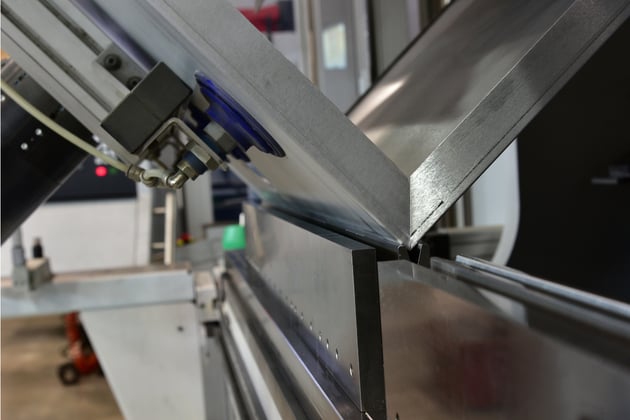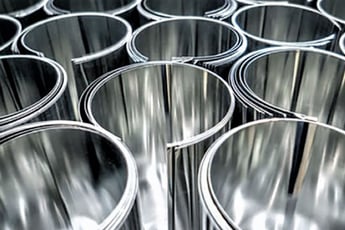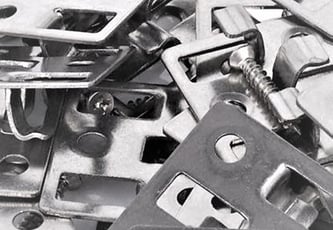This is a very common and at the same time very difficult and controversial process depending on the metal used and its characteristics.
Sheet metal has a very variable bending process, This is why knowing all the secrets can make a difference in saving resources in terms of time and money.
What is bending?
It is a process by which, exceeding the elasticity limits of the material used, causes a permanent deformation - called “bend”. Elasticity is an element to consider which returns at several stages of this bending process. During the release of the press brake, a “springback” is being generated, determining the amplitude of the sheet metal bending angle.
The 3 most commonly used metal bending techniques
Once the sheet material has been selected and its springback has been assessed, it can proceed to the processing. Bending can be achieved through the three different techniques:
Air bending

It is one of the most popular and widely used techniques for bending sheet metal.
It is a method that forms the metal by pressing a punch into the material and pushing it into a V-shaped die below. The angle of the bend will be determined by the force applied, and therefore the depth to which the sheet metal is pushed. It is a technique that allows you to process and bend even very thick metal sheets. Additionally, it also allows different angles to be obtained.
Coining

The bend in this technique is obtained by pressing the material into the bottom die. The coining process requires 4-5 times more bending force compared to air bending and therefore it requires the use of high tonnage tools and machinery.
Flattening
The flattening technique is mainly used to avoid free edges and obtain more rigidity. For this reason, the flattened bend is usually carried out after an initial air bending of the metal piece.
After the pre-bending is carried out at about 26°-35°, it is now ready for the flattening, which can be partial or total.
Nowadays, finished sheet metal products are used in many sectors thanks to their physical, chemical and mechanical properties:
-
automotive: autoworks, heat and acoustic shields, vehicle structural components;
-
architecture: roofing, partition walls, external facades, railings, door and window frames;
-
furniture/design: seats, magazine racks, sliding panels, decorative panels, kitchen tops, counters (offices, shops), urban furniture;
-
food industry: components and structures for solid/liquid food processing machines, solid/liquid food containers;
-
chemical/pharmaceutical industry: production machine components, distribution systems, purification systems;
-
healthcare products: transport trolleys, hospital bed components, medical and healthcare products.
Niuo offers advanced sheet metal working technology, guaranteeing bending based on the requested goal.



